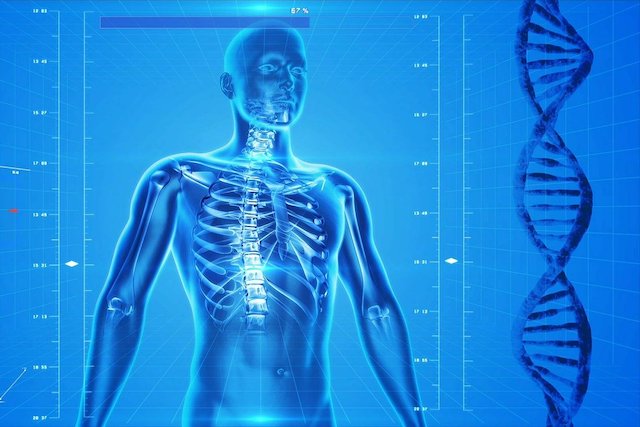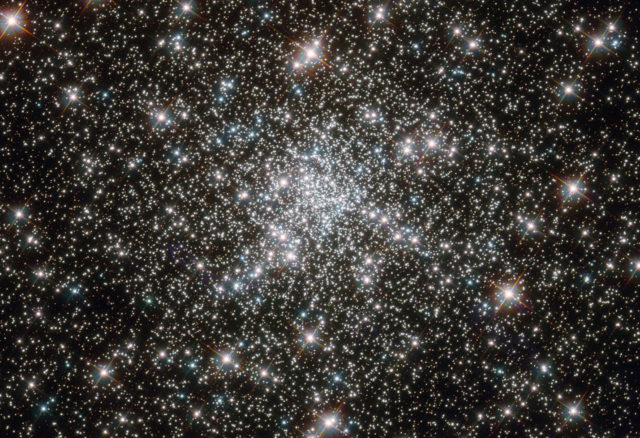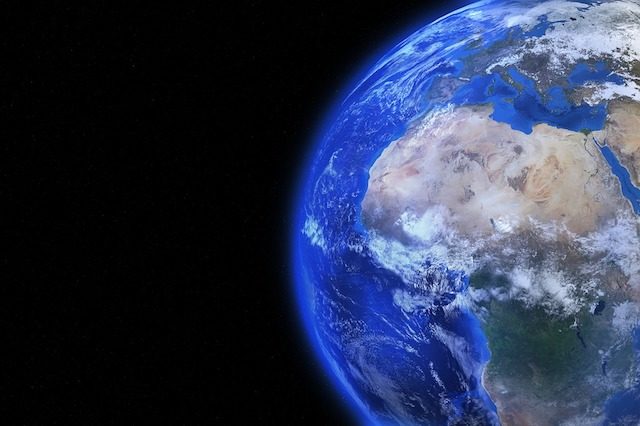Space travel is quickly becoming a potential solution to all of Earth’s problems, but how achievable is it really? While recent advances in fields such as robotics, artificial intelligence, navigation, communications, rocket design, and more have allowed humanity to explore space further than ever before, we still have many challenges to overcome before we can finally leave Earth and live among the stars.
10. Bone loss

Bone loss is one of the most debilitating consequences that future astronauts are likely to face on long-term space missions. Despite their hard, unchanging appearance, bones are actually quite flexible, as they constantly remodel themselves based on the weight they carry. Because gravity exerts a constant force on the body, human bones become quite strong and sturdy on Earth.
However, in space or other microgravity environments, bones begin to rapidly lose their strength. This is not a problem for short-term missions, but for longer missions to Mars and beyond, it is a serious problem. let , which is unlikely to be resolved anytime soon. On average, astronauts lose about 1–2 % of bone mineral density every month. One study showed that on missions lasting six months or longer, they could experience bone loss equivalent to about two decades of aging. On a three-year mission to Mars, it could be as much50% , making it impossible to return to Earth's gravity without serious health problems.
9. Navigation

Navigation is something most of us take for granted. It is now possible to pinpoint your location to within a few meters of almost any point on Earth, thanks to a constant stream of satellite information from cutting-edge positioning systems like GPS in America And Galileo in the European Union. Even without them, you could use other, older navigation methods to navigate the world, such as a magnetic compass.
In space, however, things are not so clear-cut. Although many countries have their own deep space satellite networks to aid their space operations, they only operate over relatively short distances. Space navigators of the future must be able to calculate their position, current speed, and other flight parameters from a constantly moving set of readings, since everything in space is constantly in movement .
NASA is currently working on a system called DPS , or deep space positioning system, to provide the intrasolar system navigation that will be needed if we ever hope to travel to Mars. Beyond that, however, navigation remains one of the biggest unsolved problems for future space travelers.
8. Cardiac atrophy

Cardiac atrophy is another major unsolved health problem that astronauts are likely to face during deep space missions. Simply put, the human heart gets pretty strong on Earth because it has to work against gravity to pump blood from different organs However, in the microgravity conditions of space, this stress no longer exists. Research showed that the hearts of astronauts who spend long periods of time in space become more spherical than elongated, leading to a permanent loss of muscle mass.
To combat this, astronauts must exercise regularly to maintain a constant muscle mass, although we are only talking about a few months here. For multi-year trips to Mars and other planets, the loss could be permanent, posing a serious problem for their well-being when they return back to Earth's gravity.
7. Radiation

Cosmic radiation is one of the most limiting factors for deep space travel. Although some radiation exists everywhere on Earth, even in in the air , which we breathe, it is not as harmful as what flies in space; from harmful gamma and X-ray radiation to neutron particles that can damage or even kill living cells.
Fortunately, the Earth's atmosphere and magnetic field protect us from much of this, although in space such protection no longer exists. We currently have no data on how long-term cosmic radiation affects the human body, since manned missions are currently carried out only within low Earth orbits, where the Earth's magnetic field still exists. Although modern spacecraft and spacesuits are equipped with special by means protection from radiation, we are not sure whether they will help in longer missions, such as the one planned to Mars.
6. Space debris

The US Department of Defense is currently tracking more than 27 000 potentially hazardous human-made debris floating in lower Earth orbit. If we include smaller pieces, that number could reach 500 000 , consisting largely of debris from previous rocket launches and collisions with space rocks.
Space debris is quickly becoming a major problem for future space travel. There are already so many rogue objects orbiting Earth that navigators have to maneuver around them to avoid collisions. However, collisions still happen, such as when a Chinese satellite was severely damaged by debris from an old Russian rocket back in 2021, creating at least 37 new debris As we launch more and more rockets, probes and satellites into space, the problem will only get worse and more difficult to solve.
5. New era of war

Although we have seen many wars around the world since World War II, it was a period of relative peace between major military powers. The containment of nuclear weapons has made, at least for now, the global industrial wars of the 20th century obsolete.
However, with the colonization and inevitable militarization of space, this deterrence will soon disappear. Although Outer Space Treaty The 1967 law prohibits any weaponization of space, but this has not stopped a number of countries, including Russia, the United States, India, China and others, from launching various types of military equipment into orbit.
A military conflict in space not only poses a threat to peace and stability on Earth, but could also potentially prevent anyone else from launching their own space missions. Imagine the amount of space garbage , left over from a full-scale battle between the major nuclear superpowers.
4. Outer limit

Popular space travel fantasies take for granted that we will someday unravel the mysteries of the scaling of the universe, allowing us to travel to other galaxies and star systems beyond the Milky Way and beyond. They assume that intergalactic travel is simply a matter of scientific progress and changing laws of nature, and that the universe is a static, unchanging place.
Unfortunately, there's a good chance we'll never be able to travel beyond a certain point in space. As distant stars and other objects speed up and move away from us, they become harder and harder to observe — even with our most powerful telescopes. If we flew at the speed of light right now, we'd still only be able to reach about 3% the currently observable universe—a sphere that is constantly shrinking over time. Given enough time, everything outside local group galaxies, which include the Milky Way, Andromeda and Triangulum, as well as about 50 smaller galaxies, will become inaccessible.
3. Playback

Still no one has there has been sex in space, at least none that we know of. It is incredibly difficult – almost impossible – to achieve in microgravity because of the mechanics involved. Studies of astronauts who spend longer periods in orbit also show that there is a significant decrease in sex drive, making it even more difficult to repopulate future colonies in space.
In addition, many of the biological processes underlying human reproduction require Earth's gravity and low levels of radiation to complete. Experiments on various animals have been without results , although some do report abnormalities, such as decreased sperm counts and other sexual health issues. What’s more, our bodies work very differently than, say, rats’. There have been no studies on the effects of microgravity and space-level radiation on a fully developed human embryo.
2. Gravity

By now it is clear that gravity is inextricably linked to all life on Earth. From regulating basic life processes like reproduction to maintaining an atmosphere that protects us in many ways, it is almost a prerequisite for life as we know it. we know her , just like water or sunlight. Without it, it would be extremely difficult – if not impossible – to create long-term, sustainable colonies in space.
Unfortunately, we still don’t have a way to replicate it beyond Earth — not without other serious side effects. While artificial gravity can be induced by motion, we have no way to maintain a stable, constant gravitational field. According to one theories , this could be done using antigravity or negatively charged gravitational particles, although such particles have not yet been found.
1. What about Earth?

The idea that we can leave the Earth and all its problems behind in the next few decades is not only scientifically implausible, it also makes us feel condescending about these problems. While problems like climate change, widespread food shortages, global hunger, political conflicts and others may seem too big to solve right now, they are relatively much easier to solve than the nearly impossible task make another planet habitable.
Moreover, there are several historical examples of people going to other inhospitable environments and living there, even right here on Earth. It would be much easier to, say, terraform Antarctica for human habitation than Mars, although this idea has never been realized, probably because a terraformed Antarctica would probably still be a terrible place to live. Earth provides a natural, hospitable environment for life . to flourish is something that can never be reproduced in a foreign environment.














Оставить Комментарий